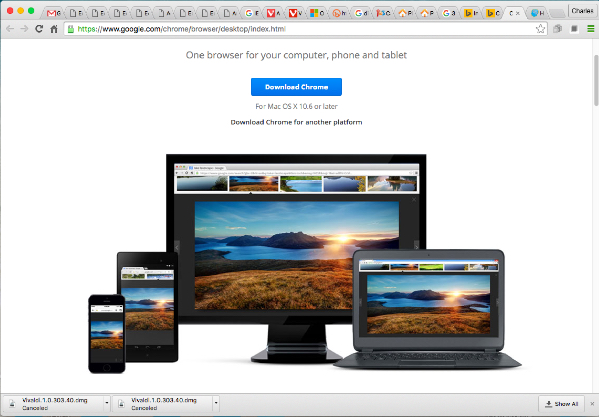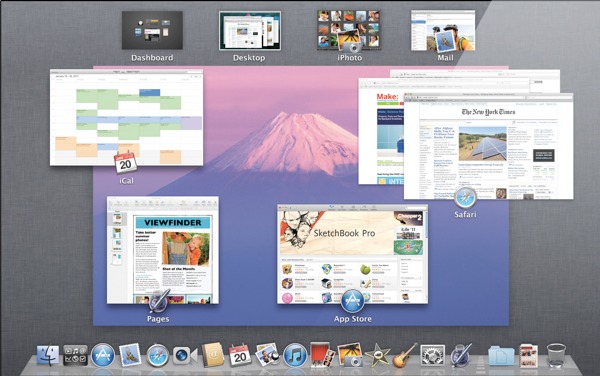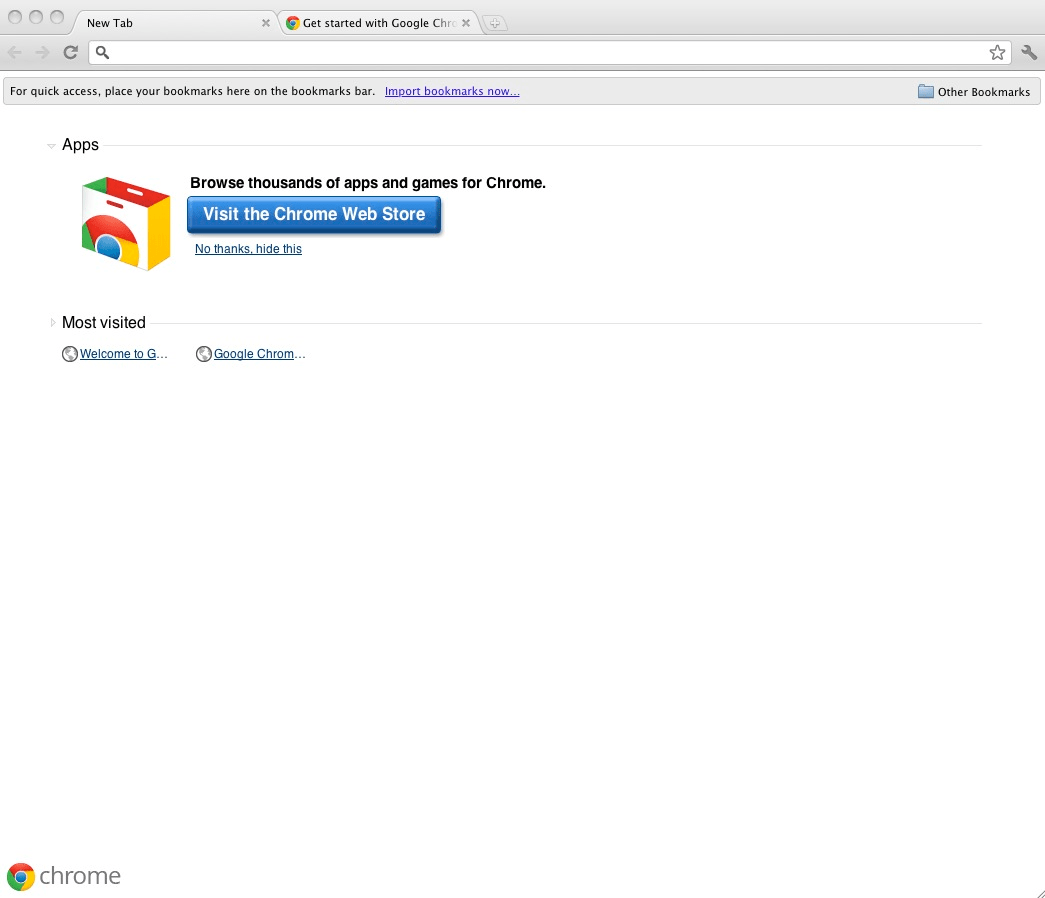Make Your Snow Leopard or Windows PC's Chrome browser look like OS X Lion, Mountain Lion, Or Mavericks with this theme. Tested on both Mac and PC. OS X Lion reached Gold Master status a week ago and is available for download on Mac Dev Center. Owing to it not being, you know, available for the general public yet, Facebook does not support it. There is, however, a way to get video chat working. Flash player no longer working in Google Chrome - Chrome Version 22.0.1229.79, Mac OS X Lion. Flash works fine in Safari and Firefox. Pages with flash freeze - can't scroll (e.g, nytimes.com); on youtube, sound plays but the video windows are black spaces. This problem appeared Sept. Lion, however, seized that gesture and assigned it as the command to move between full-screen applications, another new feature of OS X 10.7. With the change, Chrome. Chrome has it’s benefits, like syncing and the native omnibar, but unfortunately Chrome does not play well with Full Screen Mode under Mac OS X Lion – at all. You are free to click the full screen button to get in, but trying to escape from it can be a fruitless endeavor, with the menubar inconsistently appearing or not appearing at all.
Up until yesterday's release of Mac OS/X Lion, the user interface metaphor for scrolling was that you manipulated the scrollbar on the side or bottom of your content (say a webpage). So in order to scroll content upwards you swiped, wheeled, or otherwise moved down. To scroll your content downwards you moved up. This is a very computer-sciency method of scrolling in that the container had a dohicky (the scrollbar) that you touched to scroll. Tablets and smartphones have flipped the metaphor on its head. With a modern touch interface you manipulate the content directly. If you want the content to scroll up off the top of your tablet you swipe it up. To scroll the content down off the bottom of your tablet you swipe down. All very natural.
Tablets and smartphones have flipped the metaphor on its head. With a modern touch interface you manipulate the content directly. If you want the content to scroll up off the top of your tablet you swipe it up. To scroll the content down off the bottom of your tablet you swipe down. All very natural.
One of the major themes of Apple's Lion release is the harmonizing of the touch and desktop interfaces including a change to how desktop scrolling works. This change is immediately apparent when you load content in Safari. First, there are no scrollbars. Second, you swipe, wheel or otherwise move up in order to move your content up. Apple calls this 'natural scrolling'. This is initially disconcerting for most users since they've spent most of their computer lives doing the opposite. You can configure Lion to do it 'the old way' but I really encourage you to give it a chance. In about 10 minutes (or nearly instantly if you're using a trackpad) your brain accepts the change and things settle down to normal. Natural scrolling really feels natural.
Os X Lion On Virtualbox
In order for applications to behave correctly in Lion they do need to be updated. This will take some time depending on the application's complexity and the ability of its owner to turn around change. Google, for example, is actively modifying Chrome in order to provide the best Lion experience. However, until they do, Chrome will act a little odd in Lion. For example, it enters full screen mode quite nicely but it isn't immediately apparent how to exit it (see 'How to exit full screen mode in Mac OS/X Lion (when you're stuck)' for more on this topic).Another inconsistency is that the scrollbars are persistent rather than Lion transient. Rather than waiting for Google to release a new version of Chrome for Lion you can get rid of those pesky, pixel hogging scrollbars now by using one of the scrollbar-remover extensions available on the Chrome web store. I'm currently testing Scrollbar Hideby Saúl Pilatowsky. By default it only hides the vertical scrollbar but you can configure it to hide both. You can also configure it such that the scrollbars are either permanently disabled or appear 'when needed' (basically when the mouse pointer roams close to the right or bottom edges). Another option is No Scrollbar by Bestrafer which simply hides the vertical scrollbar. For both extensions you may need to restart Chrome for the scroll bars to stay gone. After that, you can take a tiny step closer to the full Lion experience.
So, you’ve decided to download an older version of Mac OS X. There are many reasons that could point you to this radical decision. To begin with, some of your apps may not be working properly (or simply crash) on newer operating systems. Also, you may have noticed your Mac’s performance went down right after the last update. Finally, if you want to run a parallel copy of Mac OS X on a virtual machine, you too will need a working installation file of an older Mac OS X. Further down we’ll explain where to get one and what problems you may face down the road.
A list of all Mac OS X versions
We’ll be repeatedly referring to these Apple OS versions below, so it’s good to know the basic macOS timeline.

| Cheetah 10.0 | Puma 10.1 | Jaguar 10.2 |
| Panther 10.3 | Tiger 10.4 | Leopard 10.5 |
| Snow Leopard 10.6 | Lion 10.7 | Mountain Lion 10.8 |
| Mavericks 10.9 | Yosemite 10.10 | El Capitan 10.11 |
| Sierra 10.12 | High Sierra 10.13 | Mojave 10.14 |
| Catalina 10.15 |
STEP 1. Prepare your Mac for installation
Given your Mac isn’t new and is filled with data, you will probably need enough free space on your Mac. This includes not just space for the OS itself but also space for other applications and your user data. One more argument is that the free space on your disk translates into virtual memory so your apps have “fuel” to operate on. The chart below tells you how much free space is needed.
Note, that it is recommended that you install OS on a clean drive. Next, you will need enough disk space available, for example, to create Recovery Partition. Here are some ideas to free up space on your drive:
- Uninstall large unused apps
- Empty Trash Bin and Downloads
- Locate the biggest files on your computer:
Go to Finder > All My Files > Arrange by size
Then you can move your space hoggers onto an external drive or a cloud storage.
If you aren’t comfortable with cleaning the Mac manually, there are some nice automatic “room cleaners”. Our favorite is CleanMyMac as it’s most simple to use of all. It deletes system junk, old broken apps, and the rest of hidden junk on your drive.
Download CleanMyMac for OS 10.4 - 10.8 (free version)
Download CleanMyMac for OS 10.9 (free version)
Download CleanMyMac for OS 10.10 - 10.14 (free version)
STEP 2. Get a copy of Mac OS X download

Normally, it is assumed that updating OS is a one-way road. That’s why going back to a past Apple OS version is problematic. The main challenge is to download the OS installation file itself, because your Mac may already be running a newer version. If you succeed in downloading the OS installation, your next step is to create a bootable USB or DVD and then reinstall the OS on your computer.
How to download older Mac OS X versions via the App Store
If you once had purchased an old version of Mac OS X from the App Store, open it and go to the Purchased tab. There you’ll find all the installers you can download. However, it doesn’t always work that way. The purchased section lists only those operating systems that you had downloaded in the past. But here is the path to check it:
- Click the App Store icon.
- Click Purchases in the top menu.
- Scroll down to find the preferred OS X version.
- Click Download.
Chrome Os X Lion
This method allows you to download Mavericks and Yosemite by logging with your Apple ID — only if you previously downloaded them from the Mac App Store.
Without App Store: Download Mac OS version as Apple Developer
If you are signed with an Apple Developer account, you can get access to products that are no longer listed on the App Store. If you desperately need a lower OS X version build, consider creating a new Developer account among other options. The membership cost is $99/year and provides a bunch of perks unavailable to ordinary users.
Nevertheless, keep in mind that if you visit developer.apple.com/downloads, you can only find 10.3-10.6 OS X operating systems there. Newer versions are not available because starting Mac OS X Snow Leopard 10.7, the App Store has become the only source of updating Apple OS versions.
Purchase an older version of Mac operating system
You can purchase a boxed or email version of past Mac OS X directly from Apple. Both will cost you around $20. For the reason of being rather antiquated, Snow Leopard and earlier Apple versions can only be installed from DVD.
Buy a boxed edition of Snow Leopard 10.6
Get an email copy of Lion 10.7
Get an email copy of Mountain Lion 10.8
The email edition comes with a special download code you can use for the Mac App Store. Note, that to install the Lion or Mountain Lion, your Mac needs to be running Snow Leopard so you can install the newer OS on top of it.
How to get macOS El Capitan download
If you are wondering if you can run El Capitan on an older Mac, rejoice as it’s possible too. But before your Mac can run El Capitan it has to be updated to OS X 10.6.8. So, here are main steps you should take:
1. Install Snow Leopard from install DVD.
2. Update to 10.6.8 using Software Update.
3. Download El Capitan here.
“I can’t download an old version of Mac OS X”
If you have a newer Mac, there is no physical option to install Mac OS versions older than your current Mac model. For instance, if your MacBook was released in 2014, don’t expect it to run any OS released prior of that time, because older Apple OS versions simply do not include hardware drivers for your Mac.
But as it often happens, workarounds are possible. There is still a chance to download the installation file if you have an access to a Mac (or virtual machine) running that operating system. For example, to get an installer for Lion, you may ask a friend who has Lion-operated Mac or, once again, set up a virtual machine running Lion. Then you will need to prepare an external drive to download the installation file using OS X Utilities.
After you’ve completed the download, the installer should launch automatically, but you can click Cancel and copy the file you need. Below is the detailed instruction how to do it.

STEP 3. Install older OS X onto an external drive
The following method allows you to download Mac OS X Lion, Mountain Lion, and Mavericks.
- Start your Mac holding down Command + R.
- Prepare a clean external drive (at least 10 GB of storage).
- Within OS X Utilities, choose Reinstall OS X.
- Select external drive as a source.
- Enter your Apple ID.
Now the OS should start downloading automatically onto the external drive. After the download is complete, your Mac will prompt you to do a restart, but at this point, you should completely shut it down. Now that the installation file is “captured” onto your external drive, you can reinstall the OS, this time running the file on your Mac.
- Boot your Mac from your standard drive.
- Connect the external drive.
- Go to external drive > OS X Install Data.
Locate InstallESD.dmg disk image file — this is the file you need to reinstall Lion OS X. The same steps are valid for Mountain Lion and Mavericks.
How to downgrade a Mac running later macOS versions
If your Mac runs macOS Sierra 10.12 or macOS High Sierra 10.13, it is possible to revert it to the previous system if you are not satisfied with the experience. You can do it either with Time Machine or by creating a bootable USB or external drive.
Instruction to downgrade from macOS Sierra
Instruction to downgrade from macOS High Sierra
Instruction to downgrade from macOS Mojave
Instruction to downgrade from macOS Catalina
Before you do it, the best advice is to back your Mac up so your most important files stay intact. In addition to that, it makes sense to clean up your Mac from old system junk files and application leftovers. The easiest way to do it is to run CleanMyMac X on your machine (download it for free here).
Visit your local Apple Store to download older OS X version
If none of the options to get older OS X worked, pay a visit to nearest local Apple Store. They should have image installations going back to OS Leopard and earlier. You can also ask their assistance to create a bootable USB drive with the installation file. So here you are. We hope this article has helped you to download an old version of Mac OS X. Below are a few more links you may find interesting.
These might also interest you:
